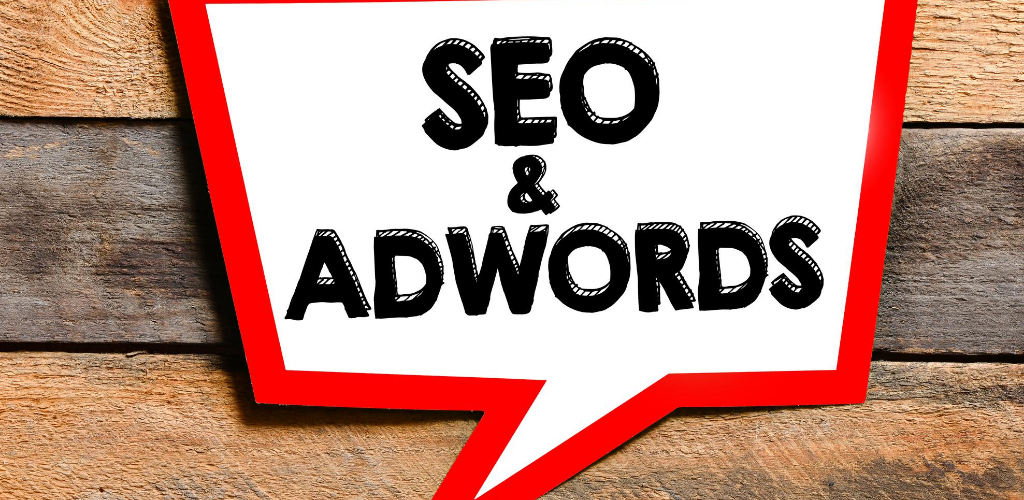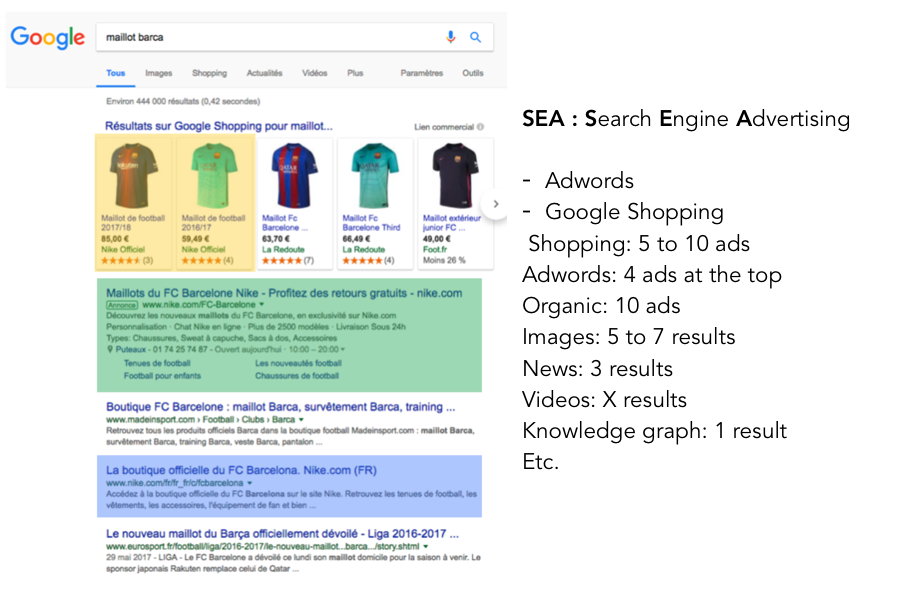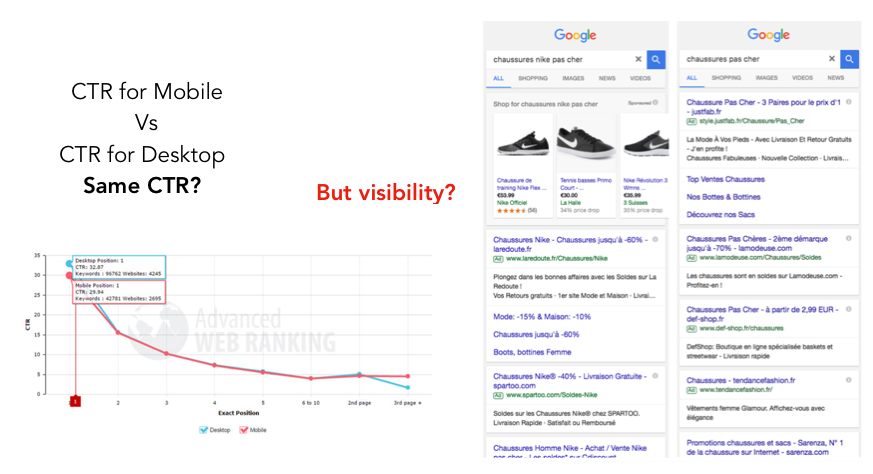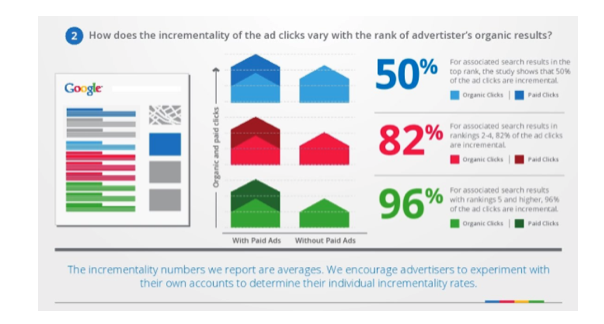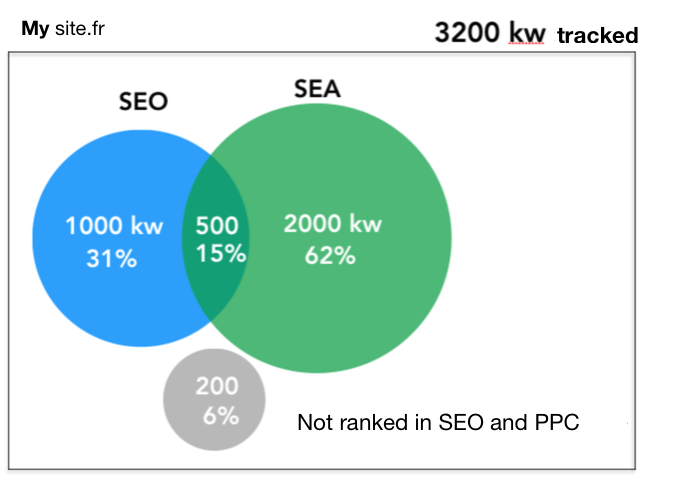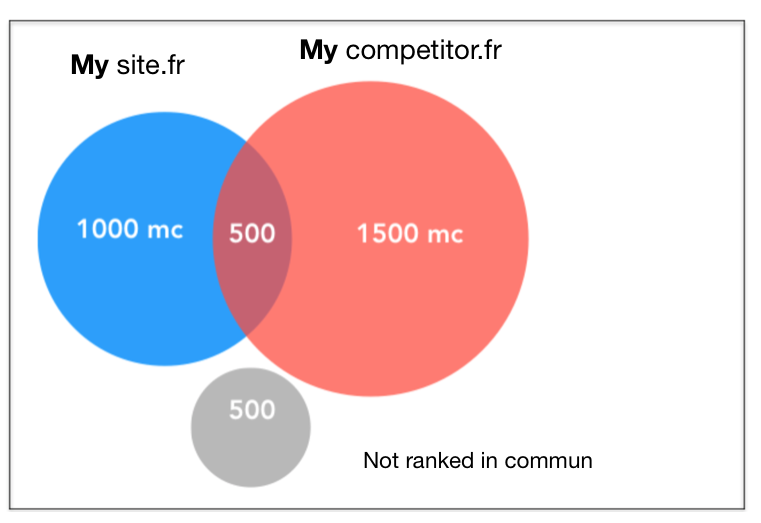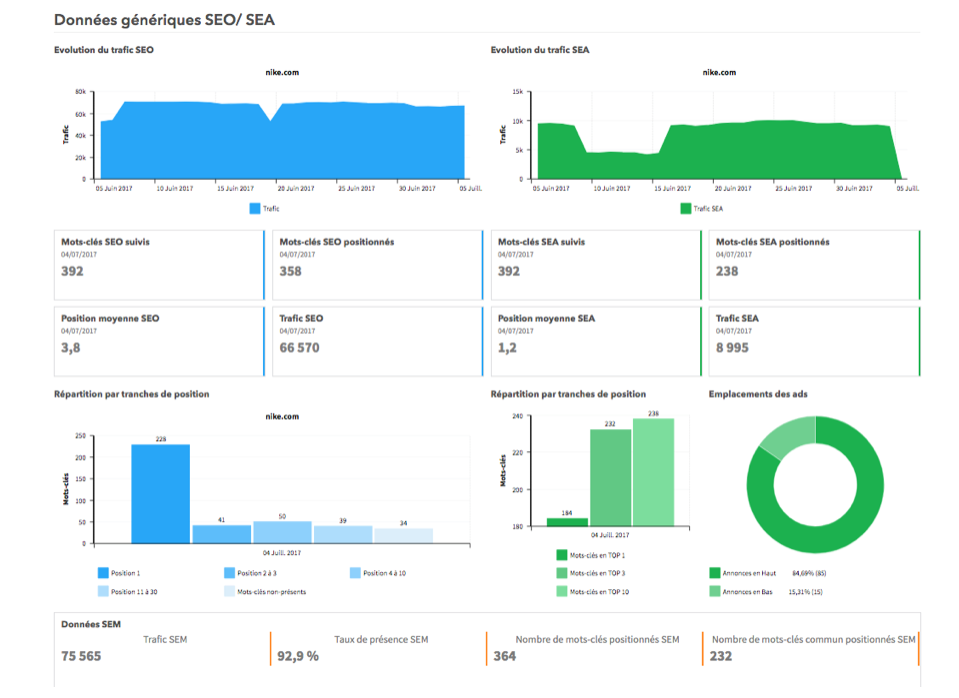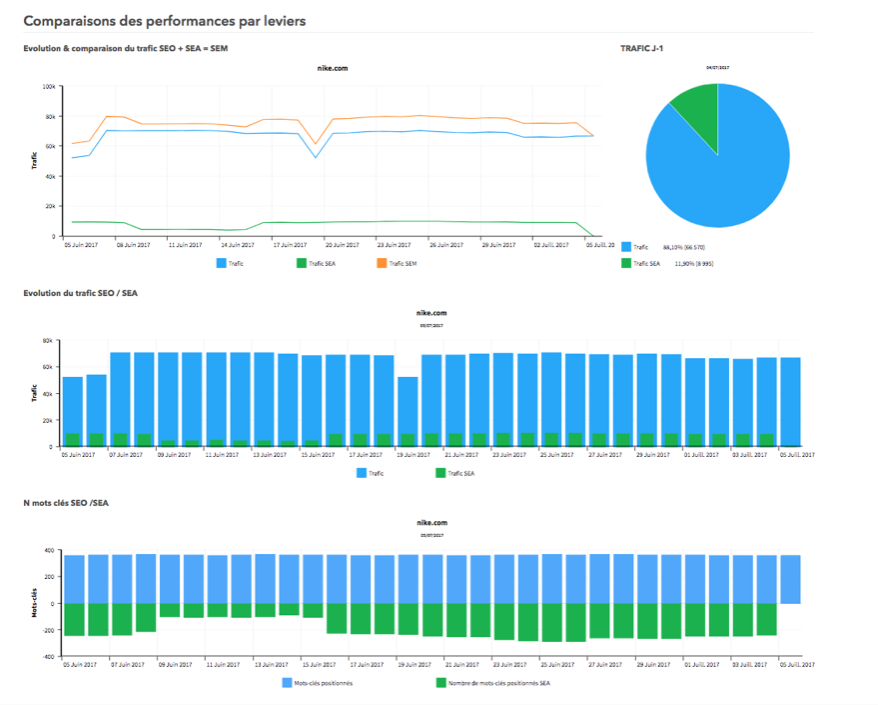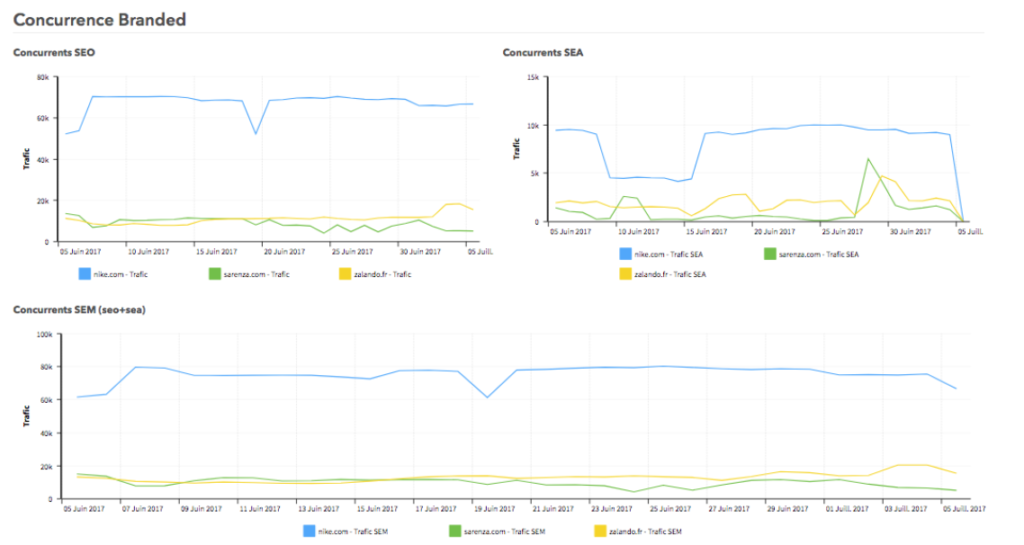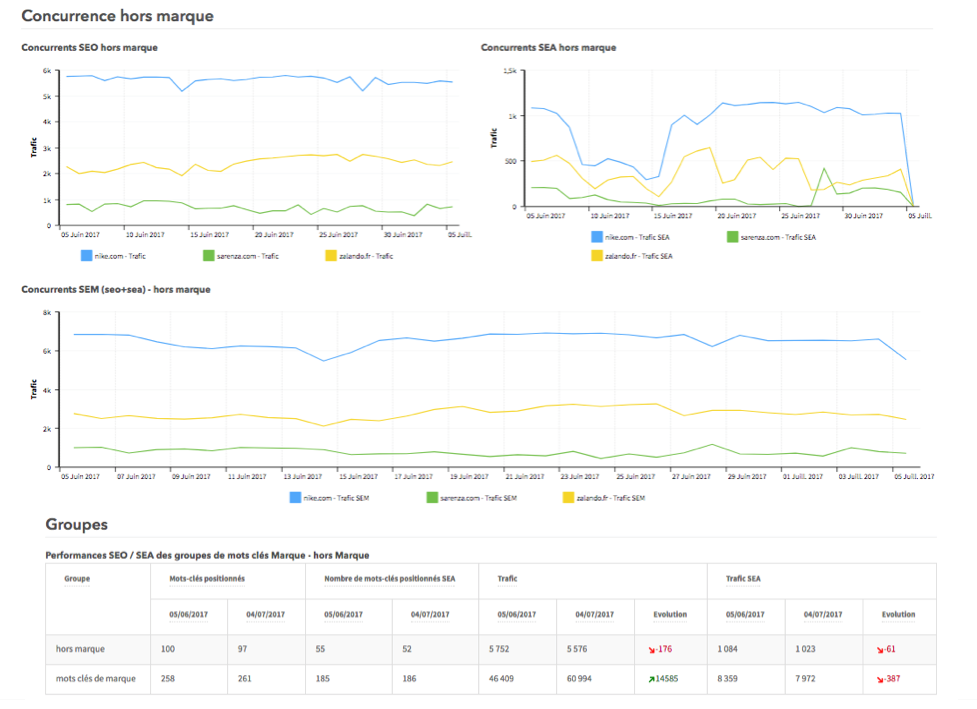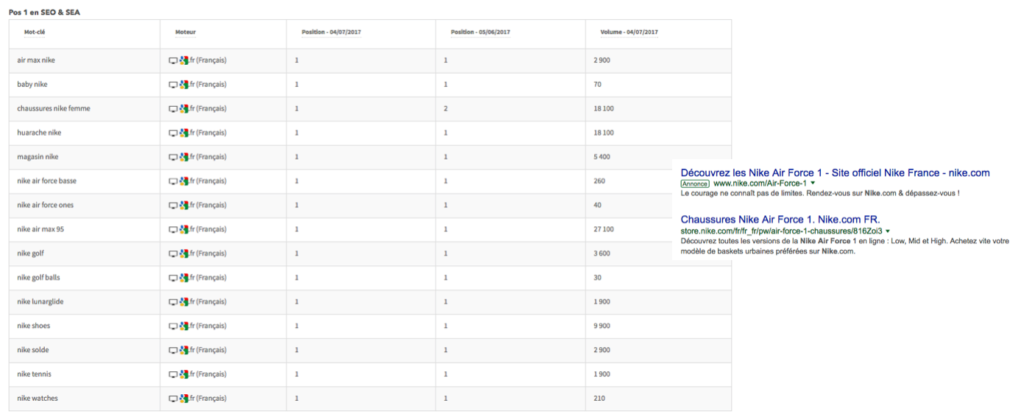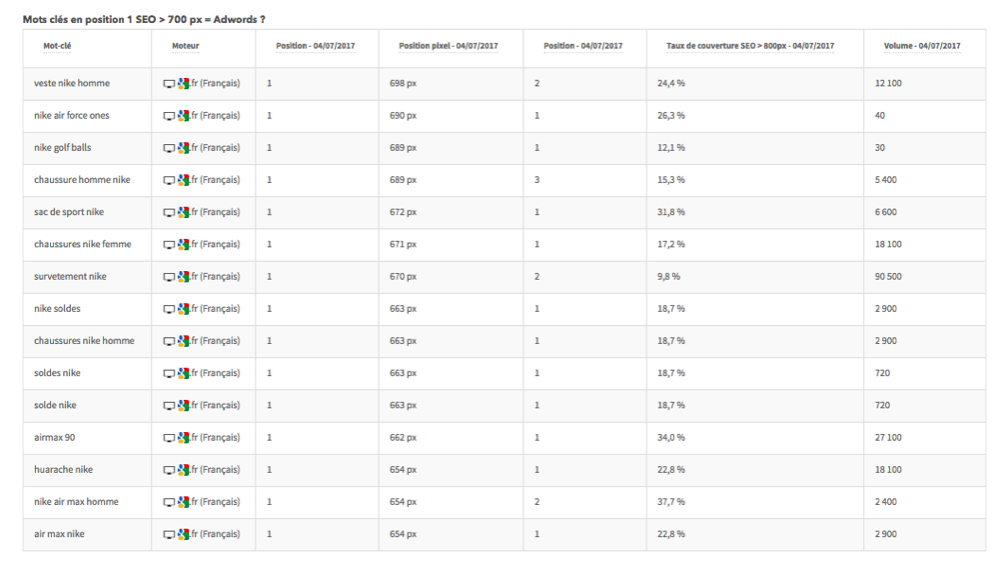In this example, using nike.com, we are tracking 392 keywords in both AdWords and SEO. In terms of SEO, the average position is 3.8 and the estimated traffic is 66,570. For AdWords, Nike has bought 268 keywords, notably brand keywords, and has an average position of 1.2.
We then compared the ranking distribution between the two techniques.
For organic searches, we will look at the number of keywords ranked first, second and third, then fourth through tenth. On the other side, we see that in AdWords, the keywords ranked in the top 3 or top 10 vary depending on the number of AdWords displayed in the search. In the tool, you can switch between the top 3 and top 10 for paid searches. As 80% of Nike’s ads were displayed at the top of the page, it makes sense to use the top 10.
In Myposeo Insights, you can see the SEM attendance rate, the number of unique keywords and the number of keywords for which you have dual positioning. Nike is ranked for 232 keywords in both SEO and AdWords, 364 out of 392 of which are covered, for a 92% attendance rate on all tracked keywords.
Next we will compare the evolution of the traffic for each technique and find a total. This is still estimated relative traffic, that is to say traffic related to the tracked keyword and based on an estimated click rate.
The first graphic shows the evolution of SEO, PPC and SEM traffic. With Nike, organic traffic is much more important than that generated by AdWords. The second graphic shows the portion of keywords in which Nike has an SEO and PPC presence.









